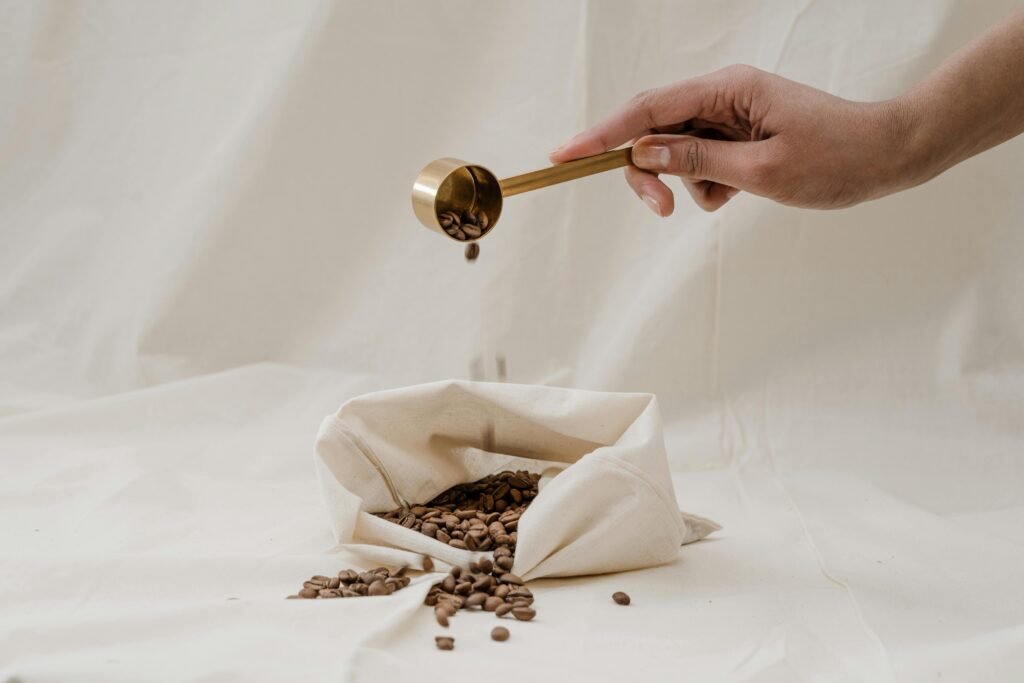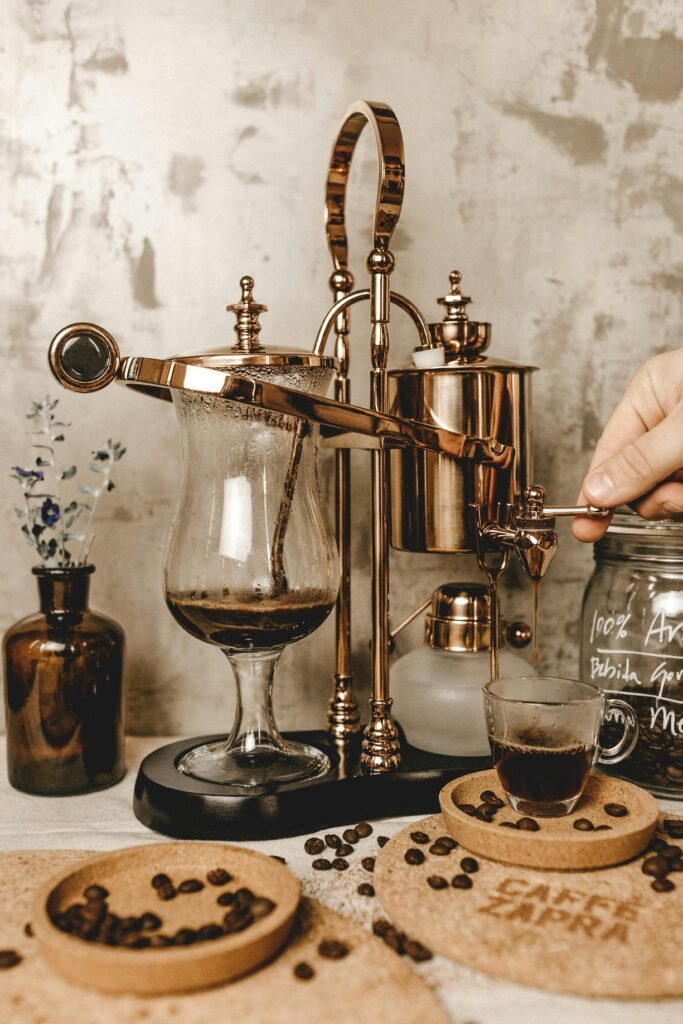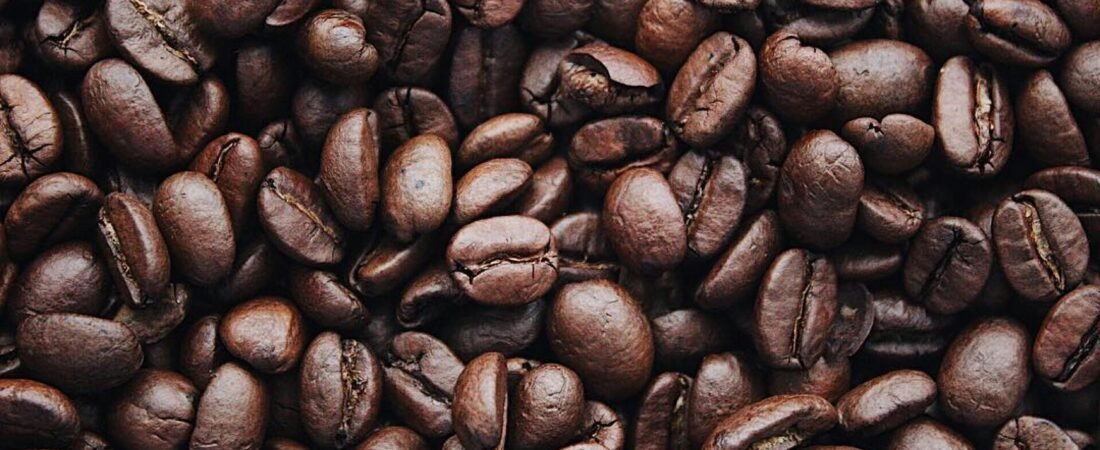For the billions across the world, coffee isn’t just a beverage; it’s a ritual, a comfort food, a social lubricant, and a daily necessity to wake us up. In the busy cafes of Milan, in the isolated kitchens of the countryside of America, the strong aroma and energizing taste of coffee pervade our existence. But beneath the smile of this ubiquitous drink lies a rich complexity, determined in large part by its primary ingredient: the coffee bean. Despite there being hundreds of species of coffee, two dominant types reign supreme over the world market: Arabica and Robusta. The two beans, with each being responsible for the popular drink, have extraordinarily differing features that heavily determine flavor, planting needs, caffeine levels, and monetary value. This piece will explore the fundamental distinctions between Arabica and Robusta coffee beans, explaining their special characteristics and illuminating why your first cup of the day is so distinctive.
Arabica Coffee Beans: The Connoisseur’s Choice
If coffee were music, Arabica would be its delicate and complex melody, valued for its delicate nuances and effervescent scent. Yielding some 60-70% of global coffee production, Arabica is often characterized as the coffee snob’s coffee of choice, demanded by specialty coffee shops and discerning home brewers.
Arabica Coffee Origin and Growing Conditions
The origin of Arabica begins in the foggy highlands of Ethiopia, where it was first discovered and cultivated centuries past. Its native habitat dictates its best growth conditions: Arabica adores high latitudes, typically between 2,000 and 6,000 feet and above sea level. Its upper altitudes provide the mellow temperatures (ideally between 15°C and 24°C or 59°F and 75°F) that Arabica prefers, with heavy rain and distinct wet and dry seasons critical for growth. The volcanic soils commonly present in such highland areas are responsible for the distinctive mineral content of the beans.
Though Arabica’s lovely flavor is worth its price, it is a notoriously finicky plant. Highly susceptible to changes in the environment, Arabica coffee plants are victim to an array of diseases, particularly coffee leaf rust (Hemileia vastatrix), and can be easily killed by insects. With this susceptibility comes the need for meticulous care and typically limits the geographical regions where it can be successfully planted, increasing its cost in the market.
Arabica Coffee Flavor Profile

The characteristic of Arabica is that it is heavily flavored and rich. It is well-known for possessing aromatic richness that is usually characterized as bright, clean, and snappy. A truly exceptional Arabica can offer a kaleidoscope of flavor notes that can vary anywhere from the homey sweetness of caramel and chocolate to the soil-rich richness of nuts. Alongside these basic tastes, coffee connoisseurs will generally detect more refined subtleties, including the vigorous pungency of tropical fruits (citrus, berries, stone fruits) and the unearthly fragrance of flowers.
Arabica is also more acidic than Robusta. This is hardly a defect, for this acidity will normally be described as a good “brightness” or “liveliness” that contributes to the overall complexity of the coffee and sounds as a pleasant tartness on the palate. The Arabica coffee body is generally lighter and smoother, with a more refined mouthfeel that glides easily over the tongue. The aftertaste is generally clean and pleasant, with a lingering sense of gratification rather than heaviness or cloying.
Arabica Coffee Caffeine Content
One of the greatest distinctions between Arabica and Robusta is the degree of caffeine content. Arabica beans contain a significantly smaller amount of caffeine, typically 1.5% by weight. Due to this lower content of caffeine, it is milder in taste with less bitterness, as caffeine is inherently bitter in flavor. For those who like to consume more than one daily cup of coffee or are sensitive to high levels of caffeine intake, Arabica typically is the preferred choice.
Arabica Coffee Bean Characteristics
Appearance-wise, Arabica beans are distinct. They are typically oval or spindle in shape, and they have a more pronounced, curved groove in the middle. This unique form helps distinguish them from their Robusta counterpart.
Arabica Coffee Economic Aspect
The fact that they are difficult to grow and the highly desired flavor have a direct link to their market price being higher. Its demanding cultivation conditions, as well as its susceptibility to disease, make it a more costly crop to grow. Despite its higher price tag, Arabica still commands most of the world’s market share of coffee production, around 60-70% of the world’s production. Its premium is due to its perceived higher quality and massive demand from specialty coffee consumption.
Robusta Coffee Beans: The Bold and Functional
While Arabica’s delicate refinement, Robusta coffee beans are the dependable workhorses of the coffee universe. Keeping pace with their name, they are strong – resilient, resilient, and with a powerful kick. While sometimes thought of as the “lesser” bean by connoisseurs, Robusta has its irreplaceable position within the universe of coffee, particularly in blends used for espresso and instant coffee.
Robusta Coffee Origin and Growing Conditions
Robusta originated in sub-Saharan Africa, where it evolved in hotter, sparser conditions. This history dictates its best environment for growing. Robusta coffee plants are at ease in hot temperatures, often with irregularly distributed rain, and can be cultivated at much lower altitudes than Arabica, typically from sea level up to 2,000 feet. This adaptability makes Robusta a far more forgiving crop to produce.
Its hardness is a characteristic trait. Robusta coffee plants are far more resistant than Arabica and highly resistant to the common coffee insects and diseases. Their natural ruggedness makes them less demanding to cultivate, less resource-intensive in terms of management requirements, and higher-yielding, thus economically noteworthy.
Robusta Coffee Flavor Profile
Robusta’s taste is as distinct from Arabica as day is from night. Robusta has a strong, forceful, and often overpowering taste. Some will describe it as being harsh or rubbery, but others appreciate its forthright, uncompromising attitude. Typical flavor notes in Robusta are earthy undertones, forceful nuttiness, and bitter chocolate. Wood tones can also sometimes be perceived.
Robusta is much less acidic than Arabica. This lack of brightness adds to its stronger, at times flatter, taste. It possesses a full body, generally thicker and more syrupy in consistency, a desirable quality for certain coffee beverages, particularly espresso, whereby it serves to add richness and persisting crema. Robusta aftertaste tends to be lingering and in some instances bitter or rubbery in nature, especially in lower-quality beans.
Robusta Coffee Caffeine Content
For the ones in need of a powerful caffeine boost, Robusta can deliver. Caffeine levels in Robusta are much greater than Arabica, ranging from 2.5% to 4.5% by weight, while in certain varieties it is well over 5%. This high percentage of caffeine not only gives it its kick but also contributes to its natural bitter character, acting as a natural pest-deterrent mechanism.
Robusta Coffee Bean Characteristics
Robusta beans are more spherical in shape and have a more linear groove running along the center than Arabica beans. Their generally denser and more symmetrical shape also distinguishes them.
Robusta Coffee Economic Aspect
Simple planting, higher yields, and Robusta plants’ natural hardiness all translate into a cheaper market price for Robusta compared to Arabica in the same way. Robusta’s cheapness due to its aforementioned qualities renders it a commercially desirable option for producing bulk coffee. Although cheaper, Robusta makes a significant share of the globe’s coffee trade and typically supplies 30-40% of global production. It is primarily used to provide body and a good crema in espresso mixtures and is also the most common bean employed in instant coffee, as it contains a strong flavor and is very high yielding in production.
Key Differentiating Factors (Comparative Analysis)

Understanding the individual characteristics of Arabica and Robusta is a straightforward comparison summary of their key distinguishing characteristics:
- Flavor & Aroma: In all probability, this one’s probably the most exceptional. Arabica is known for its depth of flavor, light flavor complexities (chocolate, caramel, nuts, fruits, floral), and sharp acidity. Robusta yields a strong, bitter, and sometimes earthy or rubbery flavor, with bitter chocolate notes and low acidity.
- Acidity: Arabica is more acidic, and it’s this that makes it “bright” and sprightly. Robusta has very little acidity, hence a coarse, normally bitter, flavor.
- Caffeine Content: Robusta has an easy claim to fame for caffeine enthusiasts, with content that usually runs from 2.5-4.5% by weight. Arabica has much less caffeine, around 1.5%.
- Growing Conditions: Arabica is a delicate plant that requires unique high altitudes, cool temperatures, and consistent rainfall. Robusta is far stronger and more resistant, thriving under hot climates and lower elevations, and demonstrating enhanced pest and disease resistance.
- Price & Market Share: Arabica commands a better price since it is not straightforward to cultivate and enjoys a taste profile preferred by the majority, cornering the lion’s share of the market (60-70%). Robusta, with its ease of cultivation and higher yield, occupies the remaining portion of the 30-40% of the market.
- Common Uses: Arabica is the bean of choice in specialty coffee shops, pour-overs, and home brewing where nuanced flavor is desired. Robusta is used extensively in espresso blends to provide body and crema, and as a base bean in instant coffee production.
Each Bean’s Role in the Coffee Industry
Neither Arabica nor Robusta occurs in isolation; both have a vital and distinctive role to play in the complex world of coffee.
Arabica’s dominance of specialty coffee houses and home brewing is absolute. Its inherent sweetness, complex flavor notes, and gentle acidity make it ideally suited for those brewing methods that highlight these characteristics, such as pour-overs, French press, and drip coffee. The coffee aficionado who insists on a complex and sophisticated coffee experience will almost always opt for Arabica. Third-wave coffee culture and its emphasis on single-origin beans and manual-brew techniques have done little to dislodge Arabica as the sweetheart of coffee’s upper echelons.
Robusta’s role as a provider of body and luxurious, velvety crema to espressos cannot be sufficiently stressed, however. Even though some high-end espresso blends are made of 100% Arabica, the traditional Italian espresso blend has a proportion of Robusta. The robusta provides body to the rich reddish-brown crema (foam) typical of a well-pulled shot of espresso, and also imparts to it a savage, lingering aftertaste. Furthermore, Robusta’s mass production and strong flavor make the basis of the instant coffee trade, providing a low-cost and convenient alternative coffee for millions.
Apart from one-time uses, coffee roasters also tend to employ the art of blending by expertly combining Arabica and Robusta beans to achieve preferred taste profiles and characteristics. Using a bit of Robusta, for instance, for an Arabica-heavy espresso blend can create crema and provide a bolder body without dominating the delicate Arabica flavors. This blending allows roasters to fine-tune factors such as acidity, bitterness, body, and mouthfeel, meeting diverse consumer preferences and creating unique signature blends. The blend of these two beans, when well mixed, has the ability to create an experience that is more than the sum of its parts.
Conclusion
The world tour of the coffee beans reveals that the seemingly ordinary process of making a cup is backed by a botanical and economic richness. From their scented and delicate flavor profiles to their hardy and sturdy characteristics, from their variation in terms of caffeine content to their unique growth needs and economic impact, the defining characteristics of Arabica and Robusta coffee beans encapsulate the world of coffee.
It is essential to note that neither Arabica nor Robusta is “better” or better than the other. Its value relies primarily on intended flavor, individual caffeine need, and intended application. To those who enjoy delicate flavors, crisp acidity, and less caffeine, Arabica is the winner. To those who require a good caffeine kick, an earthy and robust taste, and body in their espresso or instant coffee, Robusta is the winner.
Ultimately, being aware of these inherent differences makes coffee drinkers more astute in their choices and more capable of enjoying the raw scope of diversity in their beloved beverage. Through tasting coffees brewed from both Arabica and Robusta, and even from blends of the two, you can carry out a personal research of what actually delights your palate and enhances your coffee-drinking experience. The world of coffee is varied and intricate, and by uncovering the differences between Arabica and Robusta, you have a better understanding of the comprehensive journey from bean to cup.

